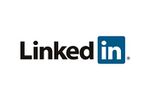Introduction
Accounting or accountancy is the measurement, processing and communication of financial information about economic entities such as businesses and corporations. The modern field was established by the Italian mathematician Luca Pacioli in 1494.
Accounting, also known as the "language of business," measures the results of an organization's economic activities and conveys this information to a variety of external or internal users. Both external and internal users use accounting information to aid in decision making. External users of financial information usually include investors, creditors and regulators while internal users include company managers, owners, the board of directors, CEO and CFO. [1]. Practitioners of accounting are known as accountants. The terms 'accounting' and 'financial reporting' are often used synonymously. [2]
Like many other industries, accounting is undergoing a drastic change with the proliferation of mobile internet access. While some accountants still find themselves sifting through shoe boxes full of clients' paper receipts or physically counting inventory, much of these tasks will soon become fully automated and completed electronically. Financial records are quickly becoming digitized and integrated into online networks that can be accessed from anywhere, which will change an accountant's job dramatically.
This drastic change is illustrated by Mark Koziel, the director of the firm management office within the American Institute of Certified Public Accountants, by stating "we are on the brink of a massive change," during a three-day conference in New Orleans. He continues to claim that "the transition is happening now, and we can choose to either hide from it or use it to our advantage." From these comments, it is evident that the nature of the accounting industry is changing drastically. Accountants now are not only seen as professionals who crunch numbers but also people who have advanced technical skills and think creatively.[3]
Additionally, accountancy will undergo huge amounts of changes within the next two decades. According to an article published by PwC, the author, Eva Nagarajah, stated that accountants and auditors have a 94% probability of job loss due to an increase in computerization. Ms. Nagarajah also claims that "artificial intelligence tools are increasingly used to replace work conducted by fresh graduates, leading to predictions of a sizable decrease in graduate employment."
This demonstrates the consequences the accounting profession faces when looking at the future as automation becomes more accessible and normal. Although this does seem worrisome for accountants all across the world, it is important to note that "accounting professionals can expect a shift towards more strategic and analytical roles" [4] which will ultimately lead to the industry as a whole pivoting towards providing more value-added services.
Accounting in Social Media
Social media is where the people are who will be needing accounting services. With 78% of adults using social networking sites like Facebook, Twitter, and LinkedIn, it’s fair to say current and prospective clients are there too. What are users of social media doing? They’re sharing information about everything – including accountants and their accounting services. When a client expresses their satisfaction on social media, an accountant's presence gives readers an immediate opportunity to engage with their firm.
Being active on social media helps turn positive reviews into referrals for a specific accountant or firm. A lot of accounting firms are starting to use social media platforms for business development purposes, and it's working. The usage of social media is helping expand a firm to look more appealing to potential applicants. It shows a friendly environment in the work field as many firms like to use such social media accounts such as twitter to show their "funny side"
Accountants are networking on LinkedIn and other career websites using their profiles as personal conversation platforms to keep in touch with current and potential clients and/or business partners. However, for the most part, accountants are using social media sites to network with little to no support from the firm they work for. Sure, Managing Partners everywhere have their own profiles, but from a partnership or firm perspective, the support is sometimes limited.
A firm will generally support the use of social media by their employees to enhance business and reputation, however, career social media sites can become an issue when a current employee is seeking employment elsewhere. Career social media websites have made it that much easier to network and look for new jobs by having the power to connect with other business professionals they otherwise wouldn't have been able to. Social media has made it that much easier to market a current employee and have their resume passed around to other business professionals around the world.
Career social media sites have also made it easier for accountants to find out about other job openings in other areas of accounting specialties that their current firm might offer. Another positive aspect of social media is the fact that it is free, which makes it much more appealing than finding a career advisor or headhunter. Once an accountant begins using social media sites for business, they are then represented 24-7 as these sites are accessible around the clock. Social media may not generate a lot of leads or be a place to run advertisements, but it has become more of a social platform to engage in discussions about an individual accountant or firm's achievements and reputational attributes- which in turn fosters career/business development and growth.[5]
Many accountants believe that social media is not necessary since it is a non-billable activity while others believe that social media is extremely important. As time goes by, it becomes more clear that social media is growing and advertising on social media should be critically important. A survey by Senior Media Examiner determined that "of the more than 3,500 marketers polled, 74% found traffic increased with as little as spending 6 hours a week on social media marketing." Social media may not be a billable activity but as social media grows, it becomes a great tool for generating more business. [6]
12 Common Technology Mistakes you Should Avoid
How many of these ‘dirty dozen’ do you see in your organization?
Over my 30-plus year career consulting on technology, I've encountered many mistakes my clients have made regarding hardware, software, and technology in general. As technology has become more integral and complicated, I've seen an increasing number of companies struggle with it. These problems aren't just minor issues; in many cases, they could threaten a company's survival.
Consider these questions: Could your company survive a data breach in which your private customer data are made public? Could your company withstand a computer server crash that wipes out your accounting data? Could your company cope with a flawed accounting system that produces inaccurate inventory reports and financial statements?
In response to the growing complexity of technology, in recent years I've been conducting technology review engagements for my clients that are designed to ferret out serious technical problems and issues, with recommended solutions. My specialized brand of technology review engagement employs procedures based on several dozen work plans, questionnaires, and checklists, each focusing on approximately 30 specific aspects of a company's technology (such as hardware, accounting software, printers, internet, security, backup procedures, training, smartphones, cloud policies, password policies, file-sharing tools, etc.). In conducting these types of engagements, I've identified 12 common technology mistakes made by many of my clients; this article describes those common mistakes and offers recommendations for avoiding them.
1. Email messages are unencrypted Perhaps the top security risk many companies routinely ignore is the failure to encrypt their emails. Some companies forgo email encryption because it can be costly and complicated, while others simply dismiss the threat as insignificant. This is a mistake. You should assume that every email message you send could be intercepted by unscrupulous people and bad actors. Without encryption, all your email messages are vulnerable.
Solution: Set up an email encryption system to protect all your email messages and attachments. One relatively easy approach is to use a free Google Gmail or Microsoft Outlook.com account, as these accounts automatically encrypt your email messages — but only when sent to other Gmail or Outlook.com users. Another approach is to purchase and install an email encryption system such as Trend Micro Hosted Email Security (starting at $27 per user per year) or Enlocked (prices range from free for 10 messages sent each month, to $29.99 per month for 10,000 messages).
2. Old computers are still used It is common to find old computers lurking around most companies. This can be problematic because these older devices almost always lack new features, freeze up more often, and are slower at performing common tasks such as booting up, launching applications, printing, and surfing the internet. In addition, as we found with the WannaCry and Petya ransomware attacks of 2017, older computer systems can be more vulnerable to cyber attacks. Issues related to older computers can rob employees of productivity and put your data at greater risk.
Solution: Computers should be replaced frequently, perhaps as often as every three years, or within 12 months of each new Windows operating system release. Why so often? In my opinion, most computers typically have a "power life" of approximately three years (though the computer's monitors can have a much longer life span); after three years, newer, more powerful computer models are generally available. Also, new operating systems are typically designed to be compatible with the latest motherboard, chips, and video card technologies. As such, their performance on older computers can be inconsistent. A few signs that it's time to replace a computer system are:
The computer is more than 3 years old, and a newer operating system is available. The computer takes more than 30 seconds to boot up. Excel or Word takes more than five seconds to launch. The user complains of significant bugs, issues, or freeze-ups. Not ready for new computers? You might be able to tune up your slower computer systems instead of replacing them, as suggested in the article "Boost Your Computer's Performance" in the September 2015 JofA.
3. Employees are not adequately trained The most common problem revealed by technology reviews is that many employees are not adequately trained to use their technologies. You can ferret out these shortcomings rather easily simply by asking employees which features they use in common products, including Excel, Word, Outlook, Windows, and their accounting system.
Based on questionnaires I've reviewed, many employees have never used key features such as Pivot Tables, the Subtotal command, or Grouping, Querying, or Mapping in Excel; Tables, Styles, Page Numbering, Columns, or Mail Merge in Word; default Signatures, Junk Mail Blocking, Meeting Requests, Rules, or the Convert Email to a Task tool in Outlook; or Indexed Searching, Voice Recognition, Disk Cleanup, or the Snipping tool in Windows. These examples are good indicators that those employees are not familiar enough with those products to leverage them for their highest possible levels of productivity.
Solution: After being initially trained in using the company's products, employees should receive continual, periodic "update training" on all the software applications they frequently use. For example, employees might receive two or three days of update training on Excel, Word, PowerPoint, and Outlook in one year, followed by two or three additional days of update training on Windows, smartphones, and the company's accounting system the following year. Similar training classes should then be repeated every other year to ensure employees are well-versed in the software programs and hardware they operate.
4. Accounting system features are underutilized Most reviews find that a company's advanced accounting system features are underutilized. As examples, invoices may be mailed instead of sent electronically, inventory needs may be calculated manually instead of being backflushed by the system, and automated sales price capabilities may be completely ignored. The result is akin to pushing a self-propelled lawn mower. This shortcoming is usually attributed to a lack of knowledge about using the system's more advanced features and functionality.
Solution: To ensure you are fully using your accounting system's capabilities, assign at least one employee the task of fully mastering your accounting or ERP system's full set of features and functions, and have this employee regularly share this knowledge with your team of system users. To bolster his or her proficiency, the designated accounting system guru should study educational training videos, YouTube clips, books about your accounting system, blogs, professional reviews, and the vendor's end-user support pages. In addition, he or she should attend the vendor's annual conference and annual end-user training courses.
5. Paperless systems are inadequately implemented Often, a company's paperless systems are found to have not been fully implemented, as evidenced by stacks of papers, folders, and file cabinets in plain view. Paperless systems offer many advantages, such as ease in locating and sharing data, cost savings in storing data, easier copy and paste capabilities and more reliable data backup. But in many cases, it takes a leap of faith for employees to fully commit the company's data to an electronic format. Some employees have a difficult time letting go of paper-based methods. As a result, your paperless system may not result in the paperless environment you intended.
Solution: To ensure your transition to a paperless office is complete, remove all file cabinets (perhaps to an archive location) and conduct "paper patrols" periodically in search of excessive papers or folders. As violators are identified, work with them to make a full transition to the company's paperless system.
Another solution would be to implement systems in place to convert paper documents to digital documents. For example, scanning documents into a system where they can be uploaded and accessed by whomever. The documents can also be converted to PDF's. This way the paper documents can now be shredding with digital copies now being available.
6. Physical security is lacking Particularly among smaller organizations, a company's physical security is often found to be inadequate. Specifically, the building's windows, doors, and door locks are low-grade products easily beaten by a determined criminal. Even worse, those buildings often lack security systems, or they employ security systems that aren't functioning properly. In many cases, doors accessed by keys have locks that can be easily picked, and no mechanism is in place to monitor who enters the premises. In some cases, current and former employees have lost their office keys, yet the company has not replaced the key locks and issued new keys.
Solution: Your building(s) should not be vulnerable. Steel doors, pick-proof locks (i.e., digital key locks), rugged windows, and alarm systems are a must. Preferably, you should install a digital key system that records employees as they enter the premises, and you should deploy alarm systems with high-resolution cameras that continuously record the view of all access points and key traffic points throughout the building.
7. Smartphones are underutilized Many companies have little or no mobile device strategy. Of course, smartphones offer the ability to communicate via voice over a cellular network, but they are capable of much more. Smartphones can also be used to manage company email, manage calendars and to-do lists, provide GPS-based driving directions to traveling employees, connect to cloud storage for data access, accept credit card payments, manage contacts, access customer relationship management systems, track business expenses, take customer orders, provide customer service apps, and more.
Solution: Companies should prepare a solid mobile device strategy that ensures employees are as productive as possible while away from the office. This means identifying and installing apps and solutions on employee's smartphones and providing the proper training so employees fully understand how to use those apps. It may also mean setting standards for the types of smartphones used, providing employees with smartphones, or implementing an employee smartphone purchase plan in which the company covers some or all the costs of employee smartphones and related insurance. Don't forget to establish security and policies to encourage safe and proper smartphone practices.
8. Cloud computing isn't used Cloud computing has emerged as a more powerful and efficient platform for business than in-house servers or desktop systems. This is because data in the cloud are more easily accessible to employees, customers, and other authorized users. In many cases, cloud-based applications increasingly offer greater functionality compared with their on-premise counterparts. In some cases, cloud solutions are less expensive. In many cases, cloud computing is more secure compared to in-house computer operations that may lack proper physical security, firewalls, anti-virus solutions, or backup systems. Unfortunately, too many companies either embrace the cloud inconsistently or treat it as an afterthought.
Solution: Companies should prepare a cloud strategy and consider moving at least some of their computer applications and data to the cloud soon. As companies begin their transition to the cloud, they should hire or engage the appropriate IT technician(s) to ensure systems are installed, configured, and operated properly. Company employees should be trained to properly use the new cloud-based systems.
9. Work areas are poorly designed In some companies, work areas and workstations are ergonomically lacking, which can hamper employee productivity. As examples, chairs may be uncomfortable, desk space may be limited, keyboards and monitors may be positioned at the wrong height, monitors may be too small, lighting may be inadequate, or persistent noises and interruptions may distract employees. As employee salaries are usually a company's biggest expenditure, it makes sense to ensure that employees are comfortable and well-equipped so they can achieve the highest productivity possible.
Solution: Examine employee workspaces with ergonomics in mind and invest in making sure employee work areas and workstations are adequately designed to encourage good health and higher employee productivity. To wit, employees should have comfortable chairs with wheels. Monitors should be larger and positioned high enough to promote good posture. Keyboards and mice should be correctly positioned so the employee's arms are parallel to the floor and do not rest on sharp desk corners, which could lead to carpal tunnel syndrome or other health issues.
10. Color printing is underutilized Color printed documents, reports, proposals, and brochures often convey a better company image than black-and-white printed documents. Unfortunately, some companies underutilize color printing or have no color printing capabilities. Additionally, some companies use older color printers that require more expensive ink cartridges to be constantly replaced. As a result, these companies run the risk of coming across to their customers, prospects, and others as old-fashioned, or perhaps, less successful.
Solution: Companies should consider purchasing a color printer with high-capacity toners, such as the Epson WorkForce Pro ET-8700 EcoTank All-in-One Supertank Printer ($999.99 from Epson Direct as of November 2018), which includes up to a two-year supply of ink (according to Epson, based on average use). In addition to saving money on toner and labor related to securing and replacing toner cartridges, this printer can duplex print and serve as a fax machine, scanner, and low-use color copier.
11. Social media are underutilized Many companies fail to leverage social media for marketing purposes. It is true that many people waste a lot of time and do a lot of inappropriate things on social media, but it is also true the major social media outlets offer access to billions of users — Facebook alone reports more than 2 billion active monthly users. Add to this the fact that in most cases a basic corporate social media presence is free and marketing opportunities are relatively inexpensive, and it's easy to conclude that it's unwise to ignore marketing via social media.
Solution: Companies should consider establishing a business presence on Facebook, LinkedIn, Pinterest, Twitter, and other social media websites at a minimum, and exclusive deals and relevant marketing programs should be delivered through those channels. Of course, all marketing efforts should be tailored to mirror the style and panache expected in those media channels.
12. Websites are inadequate Many companies have websites that are little more than glorified brochures online. In some cases, those websites lack useful content and are seldom updated. A company's website should be more than a mere online business card or four-panel brochure; it should offer a wealth of useful information to attract readers and potential customers and hold their attention. For example, a CPA firm's website should offer useful articles and videos on retirement planning, tax savings, investing, financial management solutions, wealth acquisition, protecting against identity fraud, etc. The website might also provide links to filing calendars, financial calculators, economic articles and statistics, case studies, a section for readers to ask questions, etc.
Solution: Add useful content to your website to attract the attention of readers and potential customers, update the content as needed, and add to that content regularly. Make sure to include interactive sections of your website to capture reader information, such as names and email addresses.[7]
Examples of Big 4 Medias
Facebook[8] serves as a social platform for the world to spread awareness and improve the firm's popularity by creating pages, posts, and groups to promote friendly ideas about accounting issues. "Facebook's mission is to give people the power to share and make the world more open and connected."[9].
Facebook's main goals may easily integrate the promotion of accounting awareness to other clients. Not only will it keep users connected but it will also benefit the firms. Facebook users may organize groups to help understand better of the accounting issues and raise awareness to encourage the public accounting agendas to be more easily and friendly.
There are many ads and events to promote the accounting firm's proposal and free classes as well as updates on how different accounting issues affect the potential client companies. Due to Facebook's popularity and high usage, people organize and use it as a platform to show others how Facebook Management specifically for accounting firms helps maintain relationships with current clients while growing your network to attain new clients.
Twitter[10] has been a growing micro-blog that allows users to send a tweet up to 140 characters long. With the limited characters, users are forced to be more specific with their tweets. Within a tweet, users are allowed to include hashtags of the specific word which relates to their post. To hashtag, it is simply the hashtag symbol "#" followed by a word. By clicking on the hashtag, users are able to see other tweets posted by other users tagged with the same hashtag. The image on the right shows Fuels America using Twitter to tweet an advertisement that is trying to promote environmentally friendly actions, which is directed towards the white house. Twitter allows users to direct their public messages to public figures. While they might not always respond, other users can see the inactivity by the public figure. Hashtags group Tweets with the same hashtag. Once the hashtag becomes popular it could end up on Twitter's homepage under the "Trending" section.
Twitter users use the platform for social movements as well as to gain insight on issues. Accountants join together on this platform to gain attraction for their cause. CPAs can Tweet statistics, facts, and initiatives they are taking to improve the accounting industry.
YouTube
YouTube[11] has become the most popular video hosting a domain on the internet. YouTube videos are easily shared and promoted to a very large audience. Within a number of videos uploaded to YouTube, there are categories that videos are categorized under. YouTube videos often go viral within 24 hours because people share it from one person to another. Videos are also one of the most effective ways to promote and spread awareness of the friendly approaches to accounting issues and the firm's image. Youtube has also been used for creating videos to assist students in completing and understanding concepts. Tutors, teachers, etc. can post a video on a topic to help others complete assignments or homework. There have also been videos that help people study for exams. Youtubers also allow students to have a better understanding so they have created their own courses which will help the student do better in class and exams in the school they are attending.
Of the 395 participants in the 2014 survey, more than 92 percent were active on LinkedIn for business purposes, outranking both Facebook and Twitter. The survey respondents, though, were not asked to distinguish between their individual and their firms’ activity. Perhaps it’s not surprising that posting frequency for accountants was universally low (about 1-4 posts per week on any channel), but sole proprietors are leveraging social platforms about as often as the large accounting firms. Both large firms and sole props outpaced small and mid-sized firms by using the medium up to five times more. LinkedIn proved to be the most prosperous channel for those firms noting their leads, which speaks to the platform’s gravities in the professional world. If the New Year will serve as your jumping off point to transform your social strategy from the novice user to lead generator.
LinkedIn has also become a platform for many to find accountancy jobs with potential employees posting their resumes and qualifications. There is a new option for users to choose to show themselves as "looking for work" to recruiters and only recruiters will see this. It has also become a place for new employees to post banners (made by the firms) announcing that they have joined the firm.
Advantages of using Social Media
Social media has a remarkable ability to make the world feel instantly smaller. With just a few clicks, you can connect with colleagues and catch up on trending topics in your industry. Still, some accounting and financial services firms hesitate to embrace the benefits of social media as a marketing tool. Why? Some firms may still view social media as a personal tool. Or it may be a simple reluctance to change – when business practices evolve, it can be a challenge to move on from traditional styles of marketing that have always worked well for your firm.
Free Cost
Joining the social media platforms most relevant to accounting and finance, such as LinkedIn and Twitter, remains free. While maintaining an active social media presence does require time and effort, the tool itself comes at no cost. This freebie status not only makes social media accessible for your firm, but also for your audience. It’s easy for potential clients, colleagues, partners, and recruits to interact with your firm. Not only with your firm but potential firms. Social media is a great way to broaden your horizons and really get out there. So many firms turn to social media platforms to find new employees because it is the fastest way to reach so many people in this digital age.
Visibility
Research shows that, of the firms that made referrals, 48.1% did so based on the referred firm’s expertise and not because of a prior client relationship. These “expertise-based referrals” occur thanks to firms with highly visible expertise or experts that help instill confidence in their services. An active presence on social media is a great way to enhance the visibility of your accounting firm’s expertise. Not only could you increase the amount of expertise-based referrals you receive, but you can also drive more traffic to your firm’s website and generate more leads.
Content Power
Your social media platforms are the perfect place to share your latest blog posts or promote your upcoming webinar. Industry-specific social media groups, like LinkedIn Groups or Google+ communities, can help connect you with a large, highly targeted audience. You’ll know your content is getting in front of an audience that has already expressed interest in what your firm has to offer. Plus, you’ll have the opportunity to engage in conversation with other industry leaders about the issues of the day, giving your audience a chance to better understand how you think.
Trust
Activity on social media can help build trust between your audience and your firm. For instance, let’s say you take advantage of your large Twitter following to tweet a feedback request on a specific service offering. This makes it clear that you value your followers’ feedback and cultivates a sense of trust. With social media, firms are able to monitor their reputations more closely, understanding and guiding their perceptions in the marketplace more responsively. At this point, it’s safe to say that social media isn’t going anywhere. It’s also clear that the most effective accounting and financial services firms are using social media to get ahead. If you’re ready to take advantage of social media’s powerful benefits to forge new connections and drive growth, now is the time to start.
Easier and faster communication
Social networks give you the opportunity to interact directly with customers and fans, and likewise give them the chance to interact directly with your brand. Unlike traditional print or broadcast media, which offers only one-way communication, social media is a two-way street. Consumers can now easily reach out to a customer service representative thanks to social media. Businesses can also receive, review, and respond to customers’ grievances faster and more easily than ever before. Often times consumers don’t even have to pick up the phone to discuss a dispute with a company. Social media allows them to communicate on their own time when it is appropriate for both parties. No more having to sit on hold and listen to that awful “elevator” music. Customers can immediately write a review or make a post about a product or service in real-time, too. Social media is greatly impacting the way that business owners value their customers and it’s all for the better.
Branding
While branding essentially involves each numbered entry listed in this column, it’s important to stress it as one of (if not the) most valuable capabilities of social media. You may not see as high of a conversion rate via social media (depending on the business and sales structure) as you do other marketing mediums (paid search, organic search, etc.), but the impression a brand gives off and the reputation it built can be greatly enhanced and showcased through social media. During a business’s branding journey across social media, you’re able to talk about what’s important to the brand and its customers. Tell your brand’s story; build the legend as what it’s worth to the people who have devoted their lives to building it.
User-generated content
User-generated content is a free yet outstanding way to engage with your audience while strengthening your branded content. When a consumer loves and believes in the product they're using, oftentimes they want to tell all of their friends and share their findings with the world. From a business perspective, this is free branding! Now your product is reaching an entirely new audience all thanks to one simple social media post. Plus this branded content carries more weight because it’s a personal recommendation from someone the user knows, versus a company they know is trying to sell them something. How can you encourage user-generated content? Get your followers engaged and implement a competition! Create a game like “fan pick Friday” and collect weekly submissions of customers using and celebrating your product or service, choose your favorite, and post it to the company page. Recognition is an easy way to encourage involvement. Shout your customers out and let them know how important they are to the success of your business!
Providing richer customer experiences
Through the role of new media, a lot of work can be done online, such as online meetings with customers, customers can provide electronic materials so that busy customers can more flexibly arrange a time for discussions and arrangements. No matter where the customer is, as long as there is a network, they can cooperate, which is more conducive to the development of global customer service. When providing this service, customers have more choices and can make arrangements according to their needs. At the same time, under the influence of new media, more online activities can be opened, so that more customers can understand more deeply, and customers can experience the richness of the enterprise during the activities. Online meetings, online activities, online problem solving, online teaching, and online remote control problem solving, all provide customers with an experience that they did not have before, which not only facilitates customer service but also solves problems efficiently and quickly.
Accounting firms using Social Media
Atax
ATAX [13] is a full-service national tax preparation and business services franchise. [14] ATAX is a leading provider of tax preparation, bookkeeping, payroll & incorporation services for over 30 years. It is a 100% Latino-owned, and Atax franchises over 40 locations nationwide serve clients in both English and Spanish. This business uses social media to get reviews and feedback from their clients to know what aspects they can improve, and know what areas they are doing well. The social media that Atax most use is "Google Review".[15] Atax franchises rely on Google Review to see how customers qualify their services. Atax uses social media to get references from other clients and so attract new customers. In other words, Atax franchises use social media to increase their businesses with their clients' reviews.
References
https://www.searchenginejournal.com/social-media-business-benefits/286139/#close
- ↑ http://www.accountingverse.com/dictionary/i/internal-users.html
- ↑ https://en.wikipedia.org/wiki/Accounting
- ↑ http://www.nola.com/business/index.ssf/2011/08/technological_advances_are_cha.html
- ↑ https://www.pwc.com/my/en/assets/press/1608-accountants-today-automation-impact-on-accounting-profession.pdf
- ↑ http://www.cpasitesolutions.com/social-media-for-accountants/
- ↑ https://www.aicpa.org/interestareas/youngcpanetwork/resources/networking/engaginginsocialmediawithotheraccountantswhatsinitforyou.html
- ↑ https://www.journalofaccountancy.com/issues/2019/jan/common-technology-mistakes.html
- ↑ https://www.facebook.com
- ↑ https://www.facebook.com/facebook/info
- ↑ https://twitter.com
- ↑ http://www.youtube.com
- ↑ https://www.linkedin.com/
- ↑ https://www.atax.com/company/about
- ↑ https://www.atax.com/coronaqueensny
- ↑ https://www.google.com/business/?ppsrc=GPDA2








